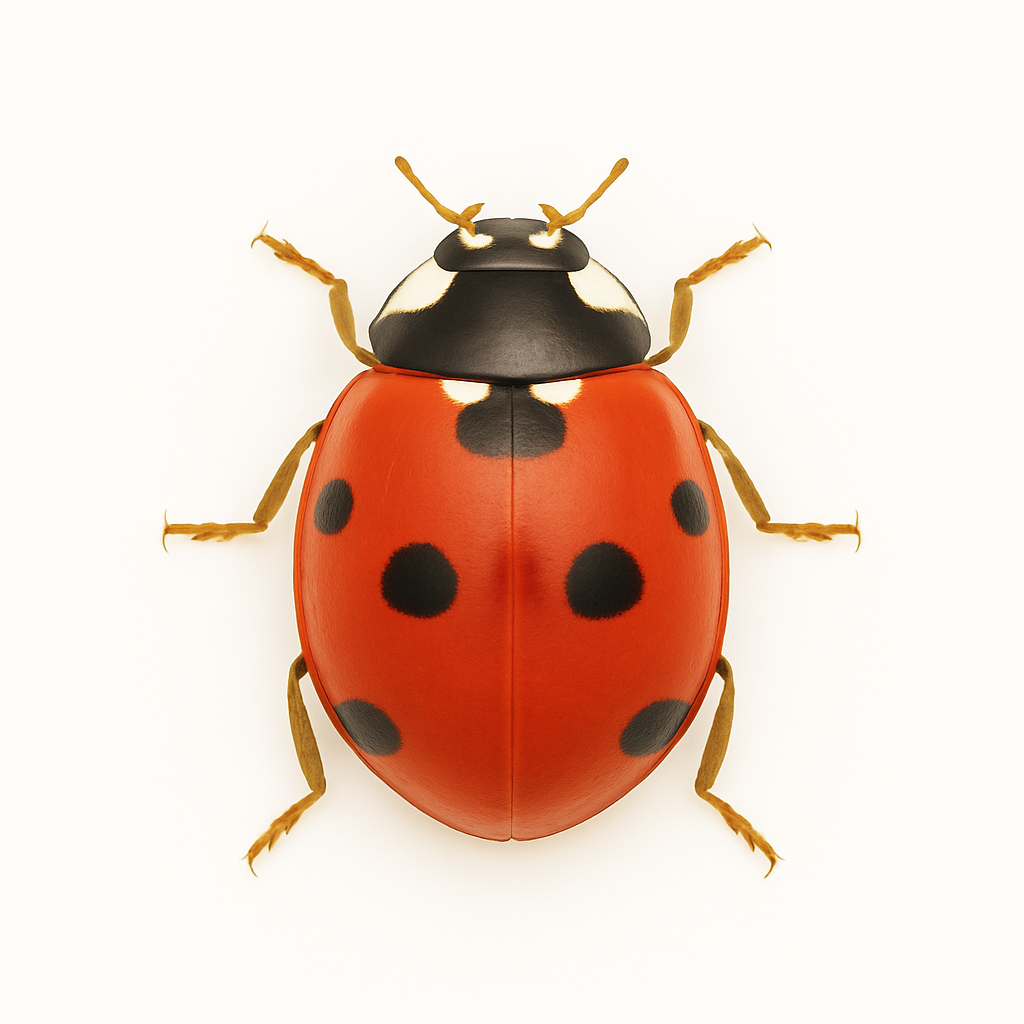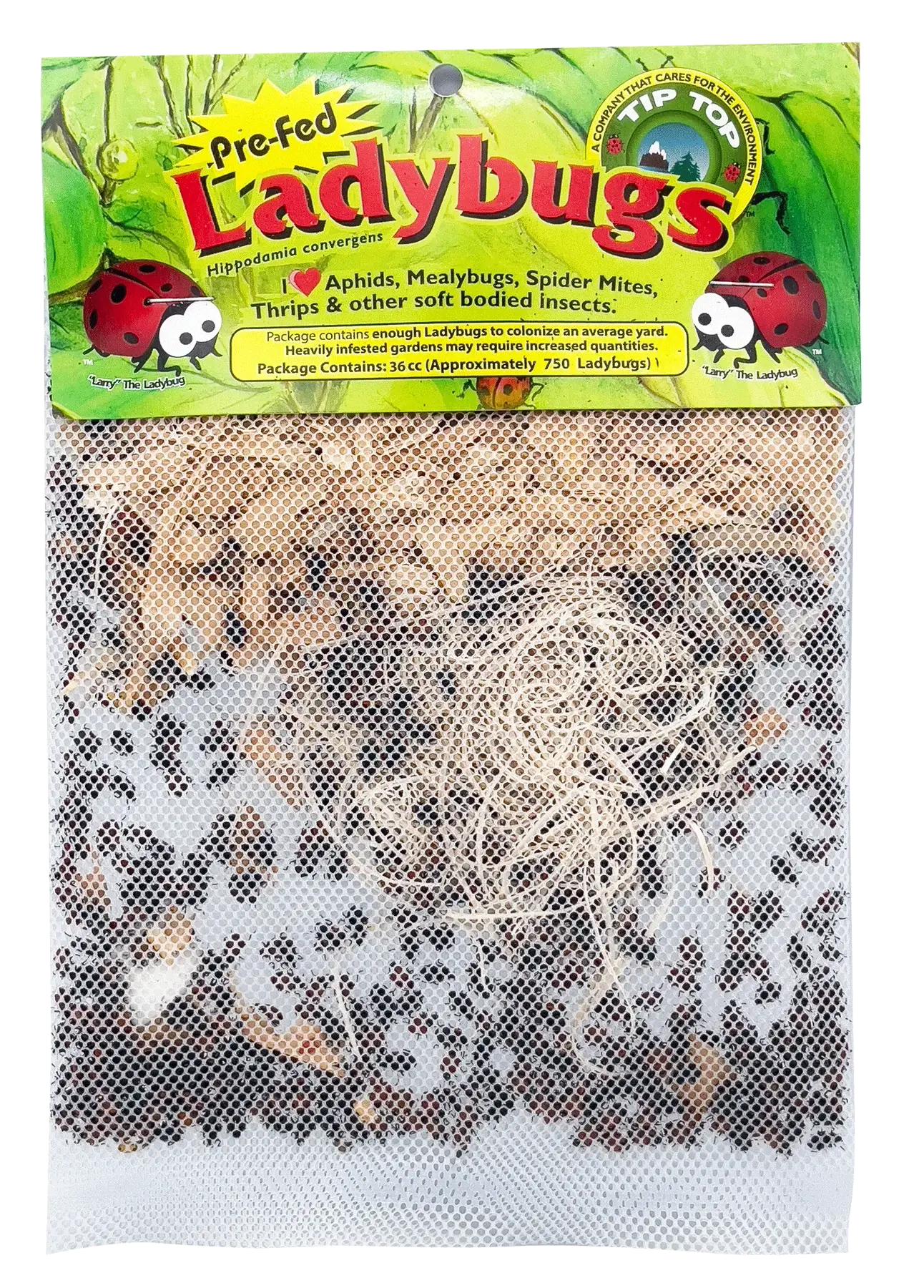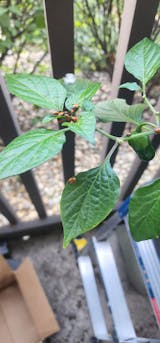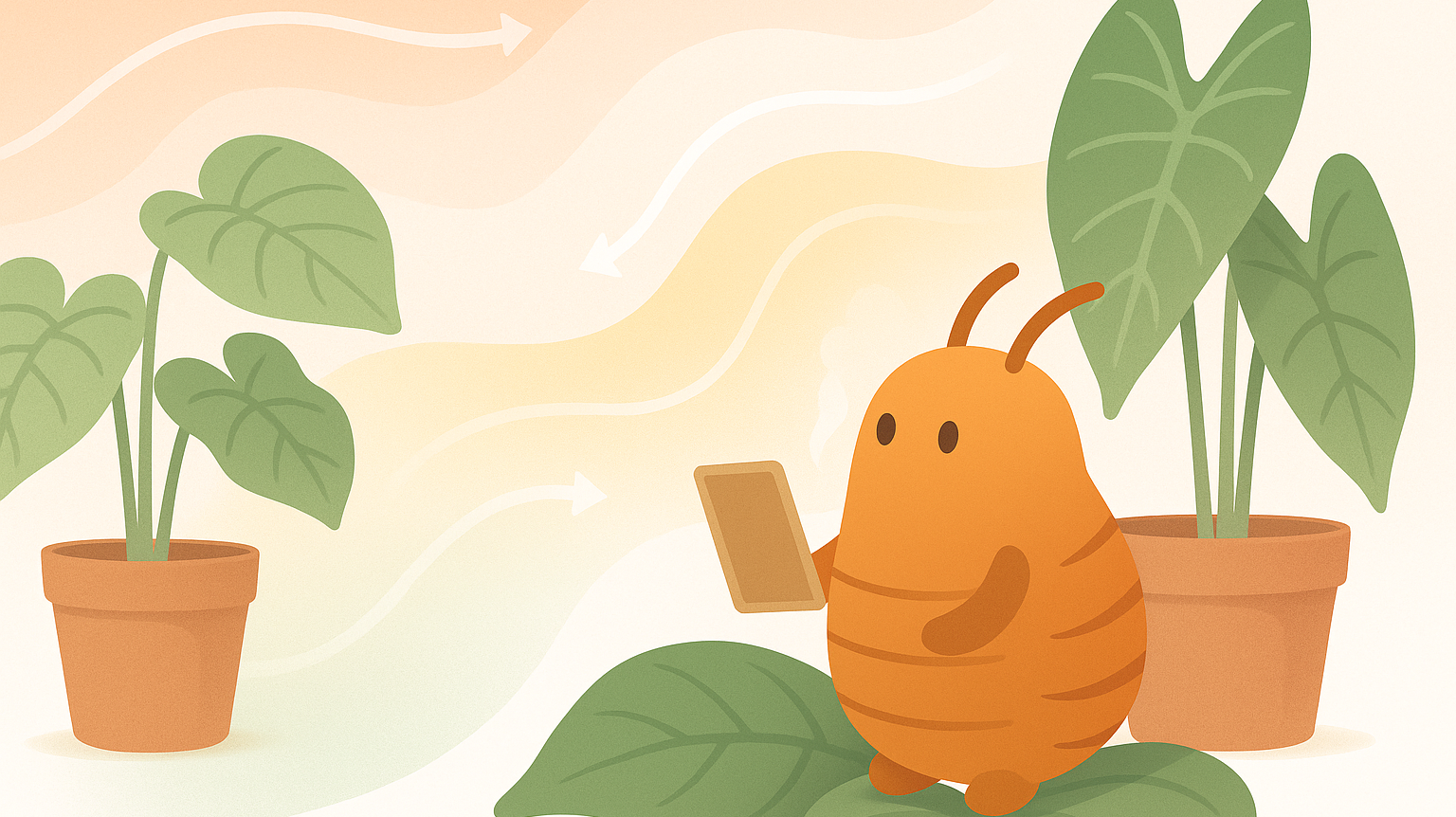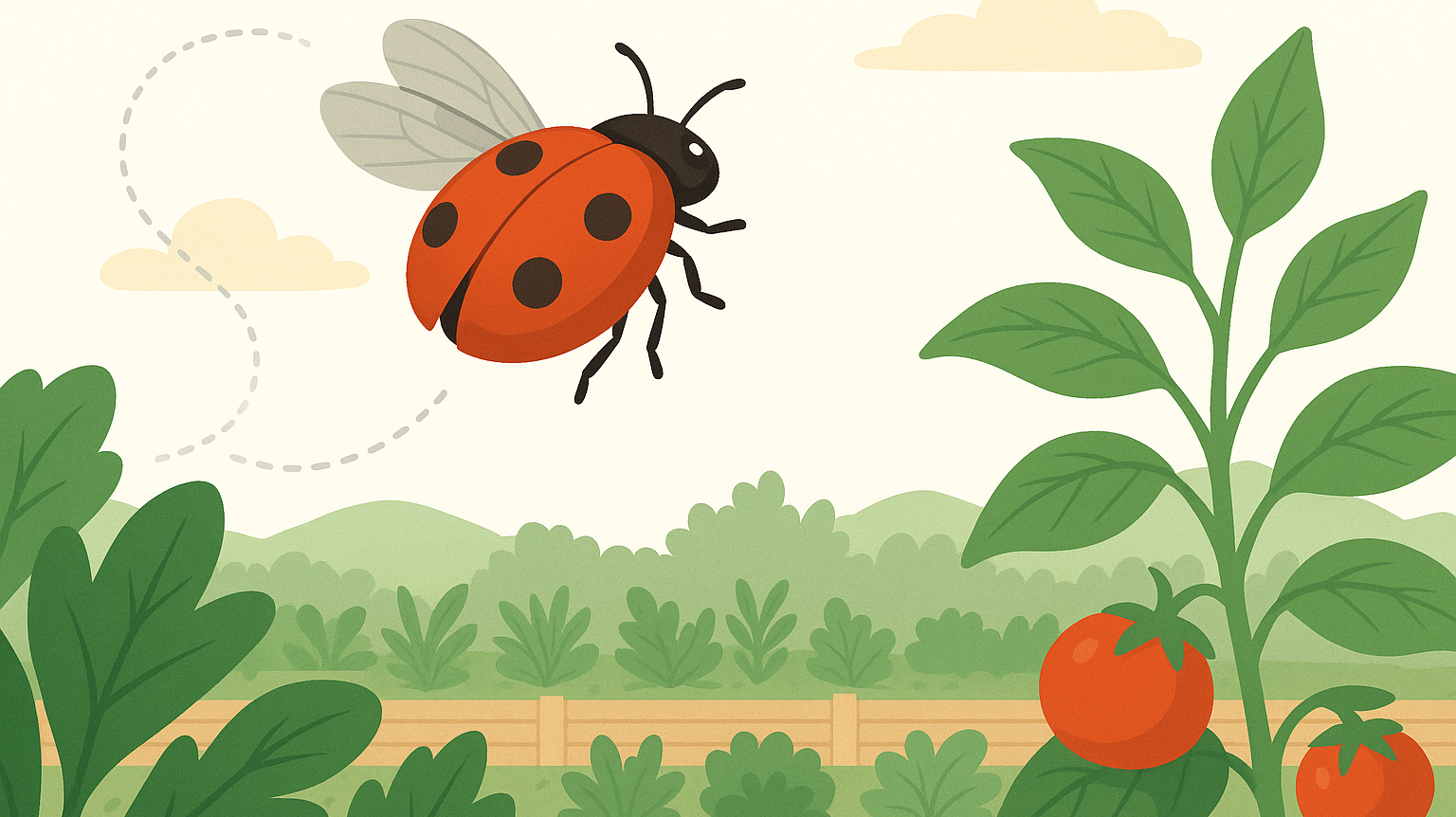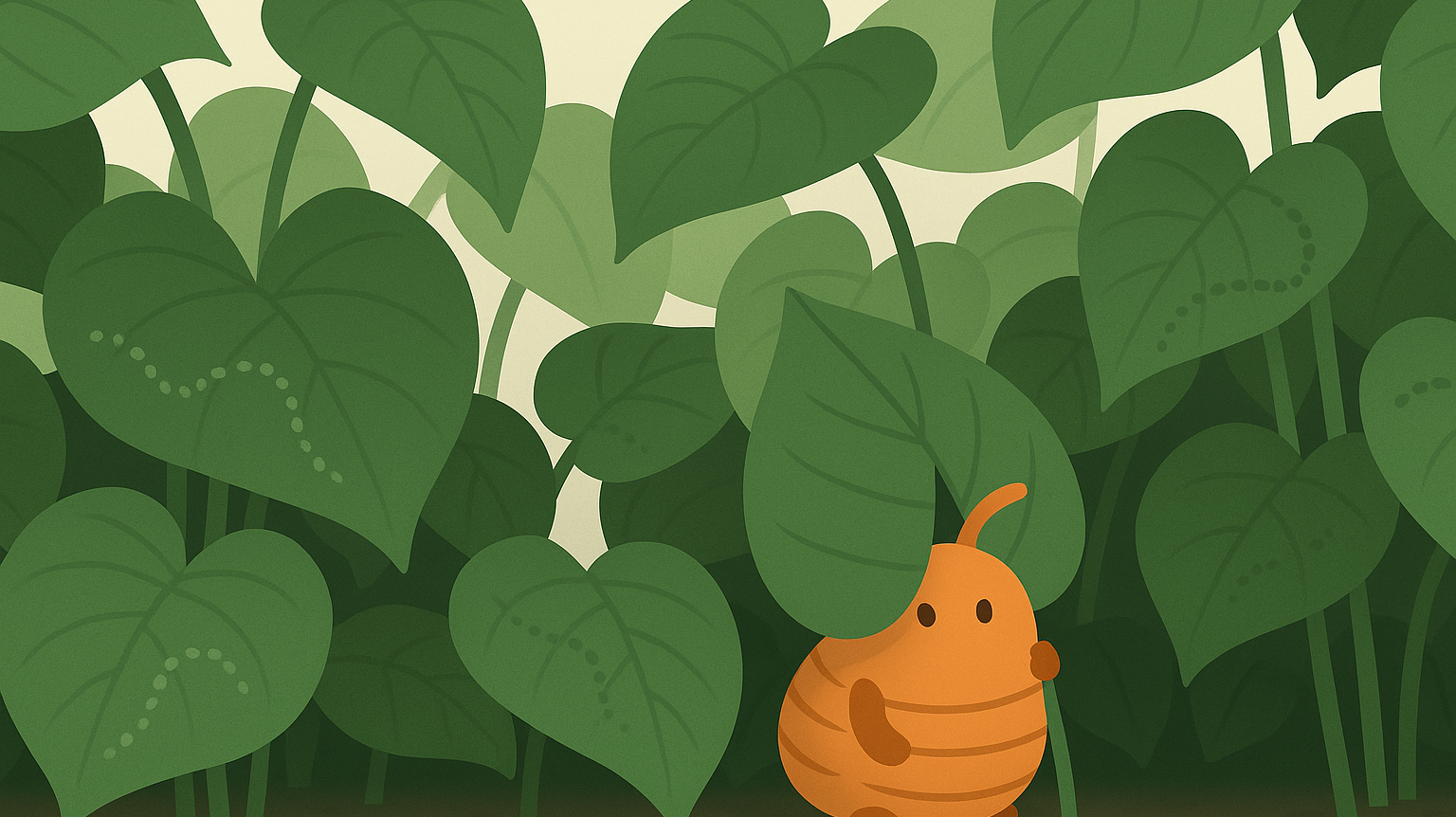How Do You Control Aphids Without Chemicals?
You’ve spotted aphids clustering on your new growth. Maybe mealybugs too. You’re not ready to reach for the spray bottle—and you don’t have to.
This is where Hippodamia convergens comes in.
Native Ladybugs (Hippodamia convergens)
Pre-Fed, Pest-Focused, and Ready to Hunt
These are Hippodamia convergens, also known as the convergent lady beetle—a native North American species widely used in greenhouse, nursery, and garden pest control.
This is not the invasive multicolored Asian lady beetle (Harmonia axyridis). Native H. convergens is non-invasive, locally adapted, and won't disrupt your environment or overwinter inside your home.
Each adult can consume up to 50 aphids per day, and they’re opportunistic. When aphids aren’t available, they’ll still hunt:
-
Thrips
-
Mealybugs
-
Spider mites
-
Whitefly nymphs
-
Scale crawlers
-
Other soft-bodied pests
They work across a range of ornamental and edible crops, houseplants, tents, and greenhouses.
Why "Pre-Fed"?
Ladybugs that are too hungry tend to fly away fast. Pre-fed ladybugs are more likely to stay put, explore your foliage, and find pests before wandering off.
Some will even lay eggs near pest pressure. If conditions are right, those eggs hatch into larvae that feed aggressively for 2–4 weeks before pupating and continuing the cycle. (No guarantees, but when it happens, you’ve got round two already on the way.)
What They Target
| Pest | Feeding Behavior |
|---|---|
| Aphids | Primary prey; consumed in large numbers |
| Thrips | Opportunistic predator, especially early-stage |
| Mealybugs | Effective on exposed or early-stage colonies |
| Spider mites | Will feed if other prey is low |
| Whiteflies | Targets nymphs, not flying adults |
| Scale | Targets crawlers before shell hardens |
Scientific Overview
-
Species: Hippodamia convergens
-
Native Range: Continental U.S., especially west of the Mississippi
-
Target Pests: Primarily aphids; also mealybugs, mites, thrips, whiteflies, scale crawlers
-
Activity Range: 33–105°F
-
Humidity Range: Performs well in variable conditions; prefers moderate RH
-
Behavior: May lay eggs; larvae are highly effective feeders if cycle begins
How They Work
-
Adults feed on pest colonies immediately
-
Some lay eggs near active infestations
-
If eggs hatch, larvae feed for 2–4 weeks
-
Larvae pupate and emerge as new adults
-
Even without reproduction, adults significantly reduce pest load
How to Use
| Use Case | Suggested Release Rate |
|---|---|
| Preventative Maintenance | 1 adult per sq. ft., monthly |
| Active Infestation | 1 adult per sq. ft., every 2 weeks |
| High-Value Plants | Reapply every 10–14 days to maintain pressure |
Release into areas of active pest presence, near new growth, or into foliage with known hotspots. Mist foliage lightly before release to keep ladybugs hydrated and reduce initial dispersal.
Pro Tips
-
Mist Before Release: Hydrated foliage helps ladybugs stay and settle.
-
Release Early or Late in the Day: Cooler temps reduce the urge to fly.
-
Store Cold, Use Fresh: They're most effective within 24–48 hours of arrival.
-
Don’t Expect Egg Laying Every Time: This is a living system, not a guarantee.
Some ladybugs may leave, but many will feed, settle, and suppress populations even without reproduction.
Storage & Shipping
-
Ships overnight with live arrival guarantee
-
Store at 36–45°F until release (up to 30 days if necessary)
-
Do not freeze or expose to direct heat
-
Use within 24–48 hours for best results
FAQ
How does the Live Guarantee work?
We know how important it is for your mites to arrive healthy and ready to work. That’s why we offer a live arrival guarantee—with flexible options depending on when we hear from you:
- Let us know within 24 hours of delivery: We’ll gladly send a free replacement shipment.
- Let us know within 2–3 days of delivery: We can offer store credit to make things right.
- After 3 days from delivery: Because these are living organisms, we’re not able to offer replacements or credit beyond that window. By then, it’s harder to know what went wrong or whether shipping conditions were a factor.
We truly want your mites to succeed—so please open your package as soon as it arrives and check on them. If something doesn’t look right, don’t wait—reach out and we’ll take care of you.
Where are you located?
We have a number of different locations in NJ, Maine and Oregon. While we'd love to have you, we are not currently open to the public.
Can I call you?
We get it. Sometimes it's easier to talk to someone, and on a case by case basis we can try to figure it out. Unfortunately though, we're really not able to take calls—FGMN is a small nursery, and we're usually elbows-deep in plants or packing boxes. To make sure nothing gets missed (and everyone gets a timely reply), we keep all communication in writing.
Feel free to message us at info@fgmnnursery.com. We mostly respond quickly, but every once in awhile replies may take a day. Do follow-up if you don't hear in that time. We're human, we miss an email here or there.
Too Many Options?
We get it. Try our mite/insect matchmaking quiz and instantly get matched to the solutions you may need.
Our Live Delivery Guarantee
We stand behind every leaf and every mite. If your plant or predatory insects don’t arrive alive on the first delivery attempt, we’ll make it right.
Here’s what you need to know:
- Email us at info@fgmnnursery.com within 24 hours of delivery
- Include clear photos of the item and the shipping label
- Someone must be available to receive the package—plants and bugs don’t do well sitting in the sun, a mailbox, or the back of a delivery truck
For plants, we offer store credit if something goes wrong.
For predatory mites and beneficial insects, you’ll have the choice of a replacement shipment or store credit.
If you contact us after the 24-hour window, we may still be able to help—just know it’s handled case by case.
We pack with care, insulate when needed, and check the weather before shipping. But once it’s in transit, the fastest way to protect your order is to open it right away.
Mite Matters
The Hidden Weather That Shapes Plant and Predator Life
Invisible weather shapes every growing space. Warm air pools under lights, cool air settles near the floor, and in between, tiny predators decide where they’ll thrive. Learn how microclimates influence the balance between plants, pests, and the mites that keep them in check.
If Ladybugs Are Just Going to Fly Away, Why Use Them?
Most ladybugs don’t fly off out of spite — they leave when the environment isn’t right. Learn how temperature, humidity, and shelter affect whether they settle or scatter, and how to create the ideal setup that keeps them working where you need them most.
Where Did My Predatory Mites Go?
Released predatory mites but can’t see them anymore? Don’t panic. Their invisibility is exactly what makes them effective. Learn why they vanish, how they hunt pests out of sight, and why reapplying keeps your plants protected.

